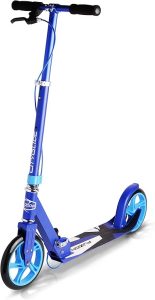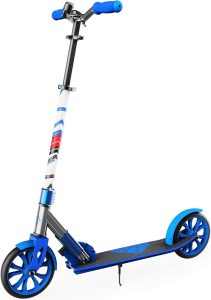The Ultimate Guide to Choosing, Using & Caring for Your Family Scooter
Scooters are a fantastic way for people of all ages to stay active, enjoy the outdoors, and get around efficiently. Whether you’re buying your first scooter or upgrading to a new model, knowing what to look for—and how to care for it—ensures you get the best fit for your family’s needs.
This guide covers everything you need to know about choosing the right scooter by age and type, popular brands and models, sizing and fit, beginner riding tips, maintenance, and where to buy.
Choosing the Right Scooter: Age-Based Recommendations & Key Features
Choosing the perfect scooter depends on the rider’s age, experience, and intended use. Scooters vary widely—from simple manual models for toddlers to advanced electric scooters for teens and adults.
Pre-Schoolers (Ages 3-5)
Look for three-wheeled scooters with a wide, stable base and a lean-to-steer mechanism that helps develop balance. These scooters usually have adjustable handlebars and a rear brake pedal. Stability and safety are paramount.
Young Kids (Ages 6-8)
Begin introducing two-wheeled kick scooters with rear foot brakes. These scooters are lightweight and often foldable, great for parks and sidewalks. Kids at this age benefit from scooters that offer easy steering and good balance control.
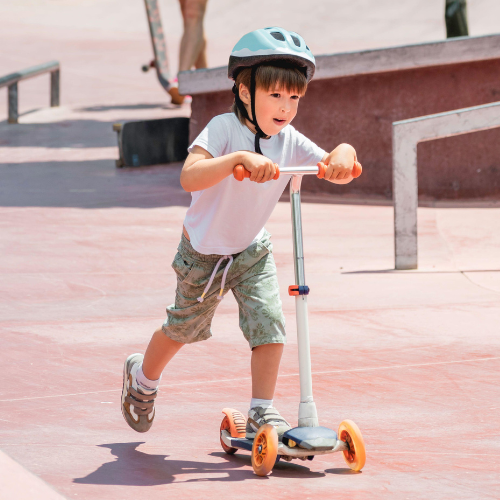
Tweens
(Ages 9-12)
At this stage, kids may want to explore trick scooters or more advanced kick scooters with reinforced decks and hand brakes. These scooters are more durable and support faster speeds and more aggressive riding styles.
Teens and Adults (13+)
Consider high-quality stunt scooters for trick riding or electric scooters for commuting and casual rides. Look for scooters with a higher weight capacity, adjustable handlebars, and advanced safety features.
Manual vs Electric Scooters
Scooters come in various forms, each suited to different needs and preferences. Two of the most common types are manual and electric scooters. Understanding the features and requirements of each type helps users choose the right scooter for their lifestyle and ensures safe, enjoyable use.

Manual Scooters
Manual Scooters are powered by the rider pushing off the ground. They require balance and coordination, which makes them excellent for physical activity and skill development. They are generally lightweight, affordable, and require minimal maintenance.
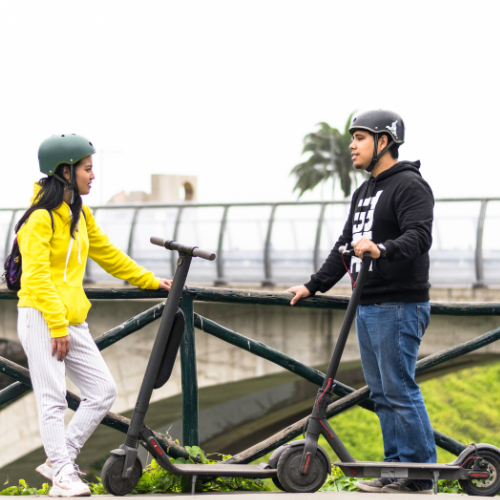
Electric Scooters
Electric Scooters feature a motor and battery, providing powered rides that are great for commuting or longer distances. These scooters can reach higher speeds but require responsible handling, maintenance of battery life, and awareness of local laws regarding electric vehicles.
Key Features to Look for in a Scooter
When choosing a scooter, consider key features like weight, durability, deck size and grip, handlebar height, brakes, and wheels. These elements directly impact comfort, performance, and your overall riding experience.
Weight and Durability
Scooters must balance sturdiness and portability. A very heavy scooter can be hard for kids to handle, while a lightweight model may sacrifice durability. Look for scooters made from high-quality aluminum or steel frames that can handle the rider’s weight without bending or breaking.
Handlebar Height
Proper handlebar height is essential for comfort and control. Handlebars should be roughly waist height for kids and teens, and adjustable handlebars are a bonus for growing riders. Too low or too high handlebars can cause poor posture and reduce maneuverability.
Deck Size and Grip
The deck should be wide enough for comfortable foot placement but not so large that it becomes bulky. Anti-slip decks or grip tape help prevent slipping, especially when riding on wet or uneven surfaces
Brakes
Most scooters have rear foot brakes, but higher-end models may include hand brakes. Hand brakes offer better control on downhill slopes but add complexity. For younger riders, simple foot brakes are usually safer and easier to use.
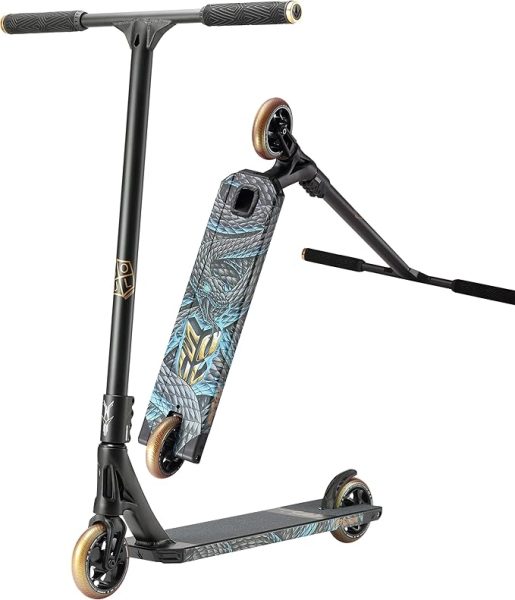
Wheels
Larger wheels (125mm or more) provide a smoother ride over cracks and bumps, while smaller wheels are lighter and better for tricks and quick turns. Polyurethane (PU) wheels are common for their durability and smooth rolling.
Top Scooter Brands Overview
When it comes to finding the perfect scooter for every member of the family, trusted brands are key. From Razor’s classic designs to Micro’s innovative ride, Globber’s durable builds, Fuzion’s smooth performance, and Swagtron’s cutting-edge technology, these top scooter brands offer something for everyone.
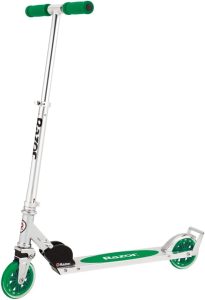
Razor
Leading brand for beginners, Razor offers an extensive range from three-wheelers to electric scooters with user-friendly designs.
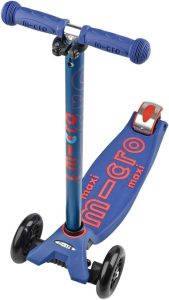
Micro
Famous for ergonomic designs and durability, Micro scooters are favored for their smooth rides and adjustable components.
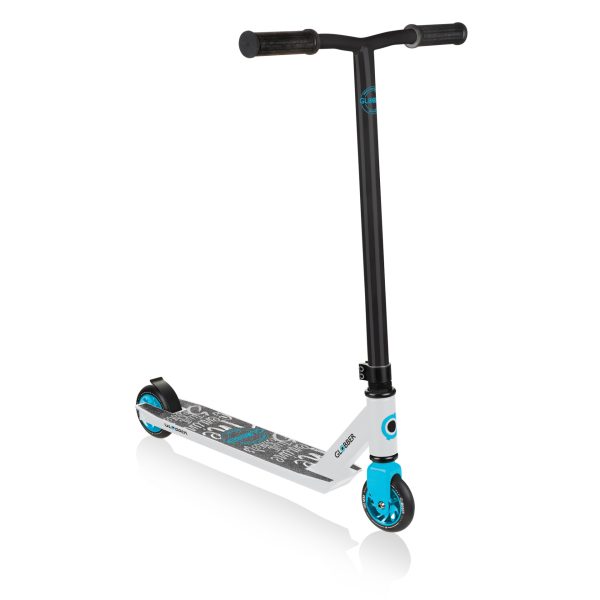
Globber
Globber scooters combine safety and style, perfect for younger children and families.
Beginners Guide to Scootering: Tips for new Riders
This quick guide covers the basics—balance, turning, stopping, and safety—to help riders start with confidence and control.
Balance
Start by standing on the scooter with one foot and pushing off gently with the other. Practice balancing on the deck while standing still before moving.
Turning
Lean the handlebars slightly and shift your body weight in the direction you want to turn. Practice slow, wide turns in open spaces before attempting sharper angles.
Stopping
Learn to use the rear foot brake by gently pressing down on the fender. Practice stopping at different speeds to gain confidence.
Safety Tips
Always wear safety gear.
Ride in smooth, flat areas initially.
Avoid busy roads until comfortable.
Use hand signals when ready to ride near traffic.
Scooter Maintenance and Care
Regular maintenance keeps your scooter safe and performing well.
Cleaning
Wipe down the frame and wheels with a damp cloth after every few rides to remove dirt and debris.
Lubrication
Apply a small amount of lubricant to wheel bearings and folding mechanisms every month to ensure smooth operation.
Inspection
Check wheels, brakes, handlebars, and screws weekly for wear or looseness.
Problem
Solving
Wobbly handlebars: Tighten the clamp bolts.
Squeaky wheels: Clean bearings and add lubricant.
Brake not working: Adjust or replace brake pads as needed.
When to Replace Parts
Wheels that are cracked or worn unevenly.
Grips that are torn or slippery.
Brake components that don’t stop smoothly.
Scooter Buying Guide: Choosing by needs and budget
Discover the best scooter for your family with our buying guide—compare features, types, and prices to find the perfect fit for your needs and budget.
Determine your needs
Is it for a toddler learning balance or a teen looking for tricks?
Will you use it for commuting or casual weekend fun?
How important is portability?
Budget
Entry-level scooters: $30-$70, great for beginners and young kids.
Mid-range: $70-$150, more durable with adjustable features.
High-end: $150+, professional-grade or electric scooters.
Where to Buy
Online: Wide selection, user reviews, easy price comparison. Watch for shipping costs and return policies.
In-store: Test the scooter for fit and feel, get expert advice, and immediate purchase.
Final Thoughts
Choosing the right scooter for your family means considering age, intended use, size, and safety features. From toddler three-wheelers to electric commuter scooters, the perfect scooter exists for every rider.
Maintain your scooter regularly, invest in quality safety gear, and practice safe riding habits to ensure every ride is fun and injury-free.
Explore our detailed scooter reviews and guides to find the best models and tips tailored for your family’s scooting adventure!

